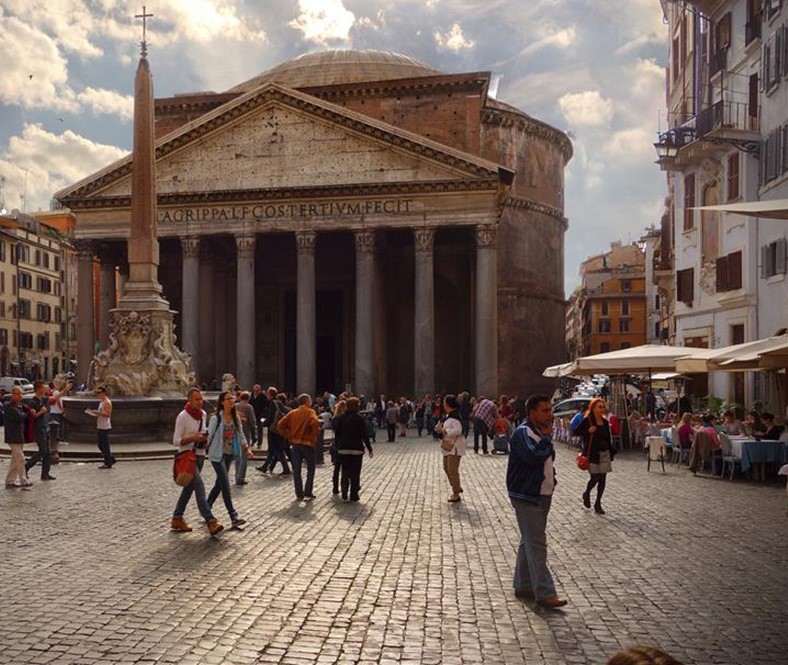On Wednesday, May 20, A+A co-sponsored a book giveaway for a copy of Randolph Langenbach’s “Rome Was,” published by ORO Editions. The range of responses was global, with entries from Australia, the U.K., Malta, Colombia, Bosnia, Lithuania, and Canada. Here in the states, we heard from people in Alabama, California, Minnesota, New York, North Carolina, Ohio, Oregon, Pennsylvania, South Carolina, and Texas.
A random pick by ORO resulted in two winners – Wade Lewis from Gatlin, S.C., and from the U.K., William Connor. Congratulations to both – and we hope to see you soon in Rome!
First there were the photography courses and the Harvard education. Then came the photo spread in Fortune during his senior year, followed by LIFE and Time. Next up: a column on his work by The New York Times architecture critic Ada Louise Huxtable.
By 2002 Randolph Langenbach had been awarded the Rome Prize and was studying masonry and earthquakes in Italy, thanks to the American Academy in Rome.
So he’s been on something of a roll for the past 40 years.
Now he’s got a new book out from ORO Editions, called Rome Was! The Eternal City from Piranesi to the Present. In part, it’s a study of Giambattista Piranesi’s engravings of Roman ruins – but with an up-to-date twist: Langenbach uses modern digital photography to document the same views that Piranesi captured over a quarter of a millennium ago.
Langenbach uses modern digital photography to document the same views that Piranesi captured over a quarter of a millennium ago.
The idea for the book came to Langenbach when he was in Rome on his fellowship and took time to visit Hadrian’s Villa near Tivoli. “I walked around to get into a structure he had done a print of – there was a reproduction of his work on a sign,” he says.
The image was a 180-degree view that Langenbach judges to be one of the artist’s best. “I realized that he had to frame his picture not as a photographer but in a way that shows the entire sweep of a hemisphere of space without distortion of the images,” he says.
So he shot the same view with his digital camera. “That enabled me to do a whole new way of photography with much wider images than with a single lens and a view finder,” he says.
The new book, small enough to carry around on a walking tour of Italy, contains about 350 images – two to three on each of its 136 pages. About half are based on Piranesi’s etchings, but images from other artists are included too. “The pictures are small in physical size, but sharp,” he says.
That makes the book a perfect fit for someone who – when the veil of this pandemic is finally lifted – takes the time to visit our favorite city.
For more, go here.
[slideshow id=2169]

